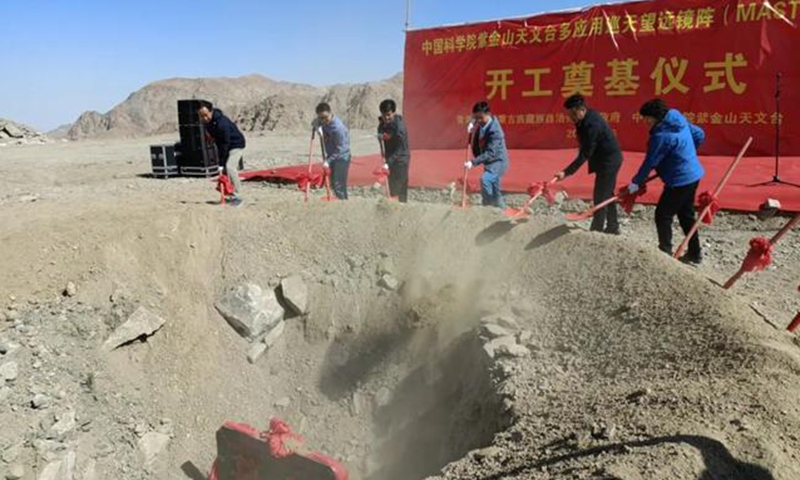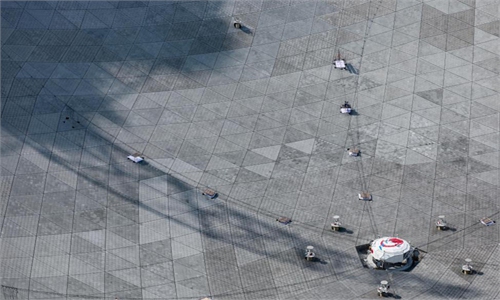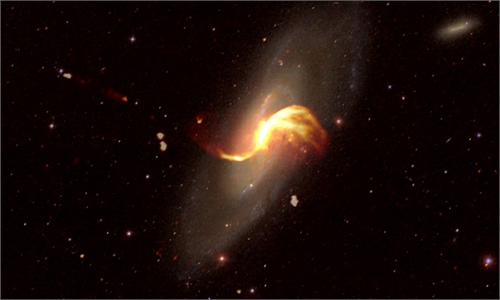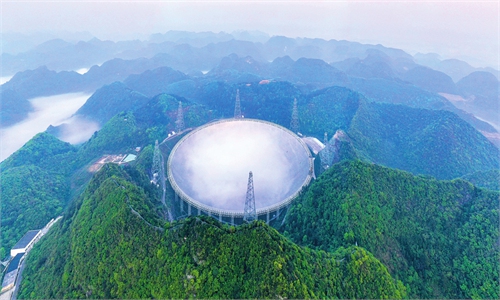New survey telescope in NW China's Qinghai will help detect space debris in medium and high orbits

Foundation stone laying ceremony of the array of survey telescope held on Saturday on the construction site in Xining, Northwest China’s Qinghai Province Photo: thepaper.cn
A foundation stone laying ceremony was held on Saturday in Xining, Northwest China's Qinghai Province, for the construction of a survey telescope array which will be mainly used to detect space debris in medium and high orbits.
The multi-application survey telescope array, MASTA, developed by the Purple Mountain Observatory of the Chinese Academy of Sciences, is planned to be built in the astronomical observation base in the town of Lenghu, in the Gobi Desert, Qinghai Province, with an average altitude of 3,800 meters above sea level, according to the Chinese media outlet, The Paper.
After its construction, the project, will be mainly used to detect space debris in medium and high orbits. It will breach China's gap on this kind of technology.
"The project will enable China's monitoring and cataloging capabilities of medium and high orbit space debris to reach the world's advanced level, aiming at possible bottlenecks in the future and serving national strategic needs such as aerospace safety," said Mao Ruiqing, Deputy Director of the Purple Mountain Observatory, according to the report by The Paper.
The project was launched in December 2018 and is expected to be completed in early 2023, Mao said.



